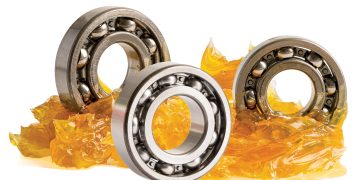A significant challenge in the realm of racing has always been the ongoing struggle between weight and strength. Each pound a racing car sheds results in crucial track milliseconds gained, which improves acceleration, braking, and turning abilities. This quest of lightweight performance must be carried out with the utmost caution since the vehicle’s structural integrity and safety must be preserved at all costs. Engineers and designers in this fast-paced sector were constantly thinking about and honing the fine line between decreasing weight and maintaining strength. Even the tiniest details are examined in the quest of greatness, and the time it takes to distinguish between success and failure can be measured in milliseconds. A solution to this problem was found under the term carbon fiber.
 Carbon fiber, unlike conventional metals, maintains its strength even as it becomes lighter. For engineers, this inherent quality opened up new options. They were able to design parts that were not only lighter but also noticeably stronger, which is unquestionably a winning combination in the realm of motorsports. When Formula 1 teams began using this extraordinary material, the carbon fiber revolution quietly started in the 1980s. Initially used for non-structural parts like body panels and spoilers, its usage quickly spread to the chassis, suspension parts, and even drive shafts of racing vehicles. Think about a race car’s carbon fiber monocoque, the main structural support. In addition to being lighter than aluminum, it is also stiffer, which improves the car’s handling and stability. It is more than just a substance; it is the secret to slicing priceless nanoseconds off lap times.
Carbon fiber, unlike conventional metals, maintains its strength even as it becomes lighter. For engineers, this inherent quality opened up new options. They were able to design parts that were not only lighter but also noticeably stronger, which is unquestionably a winning combination in the realm of motorsports. When Formula 1 teams began using this extraordinary material, the carbon fiber revolution quietly started in the 1980s. Initially used for non-structural parts like body panels and spoilers, its usage quickly spread to the chassis, suspension parts, and even drive shafts of racing vehicles. Think about a race car’s carbon fiber monocoque, the main structural support. In addition to being lighter than aluminum, it is also stiffer, which improves the car’s handling and stability. It is more than just a substance; it is the secret to slicing priceless nanoseconds off lap times.
Apart from strength to weight ratio, carbon fiber is also malleable. It can be modified by engineers to fulfill specific needs. In order to create components that are most suited for particular loads and stress situations, they can change the orientation of the carbon fibers, modify the thickness, and choose the right types of resin. This degree of personalisation results in precisely tuned race vehicles, where each component is essential to obtaining maximum performance.
In racing, aerodynamics is the unspoken language of speed. The downforce required to keep a car firmly attached to the track is provided by a well-designed aerodynamic package, which increases turning speeds and overall stability. The versatility of carbon fiber also extends to the field of aerodynamics, allowing the construction of complex and light-weight parts like wings, diffusers, and splitters. These tastefully curved designs improve the car’s overall economy while also reducing drag. Additionally, the accuracy provided by carbon fiber’s adaptable qualities guarantees that these components maintain their lightweight status without sacrificing structural strength.
The road to carbon fiber domination is not without obstacles, though. The production of it requires sophisticated machinery and experienced manpower. The basic ingredients are rather pricey in and of themselves. Due to these difficulties, premier racing series with substantial budgets have been the only ones able to implement it widely. But for those with the wherewithal, it has become a priceless asset due to the performance advantages that are without dispute.
 Although carbon fiber is the most used composite material in racing, it is not the only one. Body panels frequently use fiberglass, which is valued for its low cost, while particular parts make use of Kevlar’s superior impact resistance. Each component of the big tapestry of racing has a function, a reason for being, and a place.
Although carbon fiber is the most used composite material in racing, it is not the only one. Body panels frequently use fiberglass, which is valued for its low cost, while particular parts make use of Kevlar’s superior impact resistance. Each component of the big tapestry of racing has a function, a reason for being, and a place.
The landscape of racing changes as technology progresses. New materials with the potential for even higher strength and less weight include graphene composites. Production of composites is becoming more productive and economical thanks to improvements in manufacturing methods, such as automated fiber insertion.
In sum, carbon fiber and composites have had nothing short of a revolutionary effect on the world of racing. It’s a testament to the visionaries’ unshakable tenacity who dared to imagine racing vehicles that are not only quicker but also lighter and more nimble than before. The racetrack, like it has for years, continues to be the ultimate innovation testing ground. It is a dynamic setting where the fields of superior engineering and material science come together to push the limits of what is feasible. With the introduction of carbon fiber, the fundamental nature of racing has changed, transforming the chase of speed into an unrelenting drive for perfection. It is a monument to human creativity that racing cars defy accepted knowledge thanks to the marriage of cutting-edge technology and unbridled desire. Previously used as a proving ground for conventional materials, the racetrack now reverberates with the high-pitched whine of these carbon fiber-clad wonders as they slice through the air, every curve of which has been optimised for optimum efficiency.
Carbon fiber and composite materials will continue to lead the way in racing innovation as we approach the future. They serve as the progress’s engines, accelerating us into an unrestricted future. A new generation of engineers, designers, and racers will be motivated to challenge the current quo and redefine what is possible by the pursuit of perfection on the track. Each lap around the track is a search for the remarkable, and the trip is characterised by unwavering determination. The story of the future of racing is one of technological advancement and human aspiration coming together to provide an enthralling spectacle. It is a story in which the desire for speed and perfectionism are both unrelenting. We are all privileged to be able to watch this thrilling voyage as racing lovers, where every curve offers the promise of pushing the edge even farther and where the scream of engines and the whirr of invention meld together to create a symphony of development. Fasten your seatbelts because the future of racing has never looked more promising, and we are all about to embark on an incredible voyage into the uncharted.
AUTHOR

MANOJ R
Mechanical Engineering Student
Designer
Motorsports Enthusiast



























































